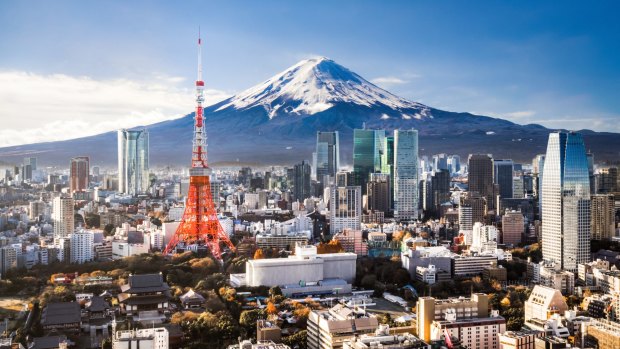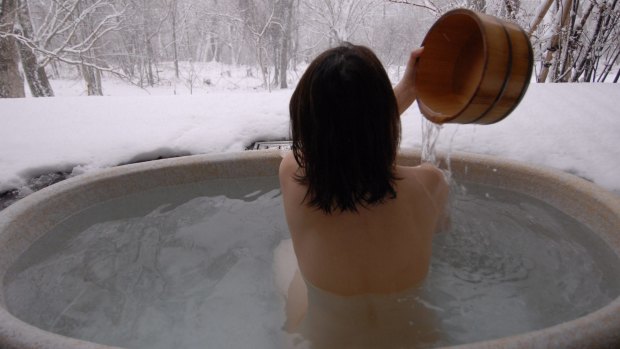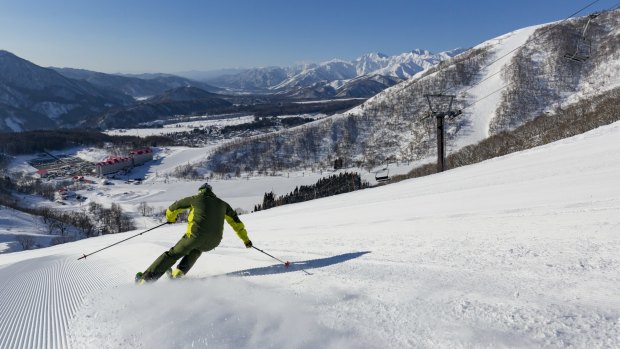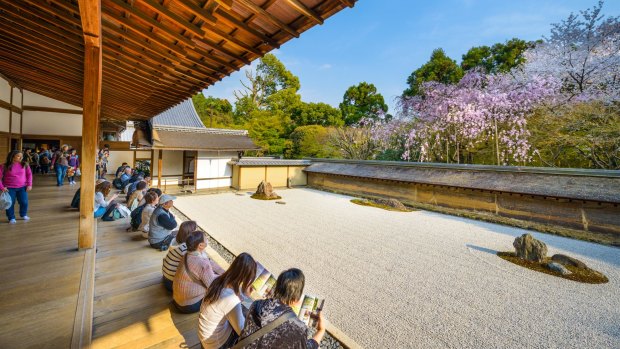This was published 4 years ago
Australian tourist numbers to Japan: Six reasons we are flocking there

Over the past 10 years, the number of Australians heading to Japan has grown more than 300 per cent.Credit: iStock
A record 51,200 Australians visited Japan in November last year. In over the previous 12 months, 515,000 Australian residents visited.
That's according to Australian Bureau of Statistics figures for numbers returning from short-term trips to Japan. The year before the figure was 458,800, and the year before that, 393,100. That's an increase of 31 per cent in two years. A decade ago, in the year ending November 2009, just 153,600 Australian residents returned home from short-term visits to Japan. That's a 335 per cent increase over 10 years.
So why the fascination? For some, it's the same reasons they might choose to travel anywhere. The skiing is great, the forest pilgrimage trails are heavenly, the architecture is amazing – but then Japan does weird like nowhere else. Where else can you find a restaurant that will serve you up a fish that can kill you, revel in the adventures of a Manga Soul Reaper called Bleach or the children's fantasy world of Spirited Away, or dress up like Little Bo Peep, dye your hair pink and parade around Tokyo's Jingubashi? Serious, what's not to like?
Naked bathing with strangers

Credit: iStock
If you want a window on the Japanese soul, nothing beats a skinny dip. Every city has traditional bathhouses and just like tea drinking or flower arranging, buff bathing in Japan has a ritualised format. Disrobe, sit on a stool and scrub yourself scrupulously at one of the wall-mounted taps, sluice off the soap and shampoo and only then may you enter the tub. Stain the bath with tell-tale soap and you'll spread shock and dismay. The handkerchief-sized scrubbing towel can be used to screen your privates but don't put it into the bath – you can put it on your head if you like. Prepare to be broiled, or else gently shocked – some baths have a mild electric current to stimulate blood flow.
Skiing

Located on the northern island of Hokkaido between volcanic cones and surrounded by national park, Niseko is where Australia meets Japan against a powder-white backdrop. It's been dubbed the Bali of snowfields and the Aussie presence is everywhere. It's partly down to conditions. Niseko gets an average dump of more than 15 metres of dry powder each winter and the four inter-linked ski resorts boast almost 900 hectares of skiable terrain. It's also good value. From 1997 to 2016, prices in Australia soared by over 40 per cent. In Japan over the same period, the figure is 0.5 per cent. Which means your Aussie dollar goes a whole lot further in Niseko than it does in Thredbo or Mount Buller.
Gardening

. Credit: iStock
Who but the maverick Japanese would have thought of creating gardens that consist of nothing but raked pebbles? With a single shapely rock as a focus? Or of cultivating perfect miniaturised versions of gnarled oak trees and junipers the size of a smallish pot plant? Some of the best examples are found in temple precincts, and Kyoto in particular has a number of outstanding examples. In the city's east, Ginkakuji Temple is surrounded by a complex of ponds, bridges, tea pavilions and raked gardens against a backdrop of maples, azaleas and cedar trees. Prime time is cherry blossom season, between late March and early April depending on latitude, when most of Japan takes a holiday to admire the pink blossoms, write haikus and drink lots of sake.
Turning Japanese
Yumekoubou is a photo studio with several Kyoto locations where you can dress up like a full-blown geisha. After the ultimate hair and make-up session you will be photographed in kimono and obi, the wide waist sash. Brave souls might take to the streets in costume and teeter around in okobo, the high wooden platform shoes that force the wearer to take dainty steps. Chances are you'll be asked to pose for photos, but if you get a request to sing an Edo period kouta, better learn to say "Honki desu ka?" (Are you serious?).
Design
Japanese design is a thing of beauty and wonder. Chopsticks, rice fields, school uniforms, calligraphy, garden walls and knives come with a built-in aesthetic that exists only within the borders of Japan. You only have to open a bento box – one of the instant snack packs sold everywhere – to find yourself cooing with delight. That sense of design struggles for survival in the modern urban environment, where concrete, glass and steel impose a bland uniformity, but most Japanese cities have historic enclaves where timber architecture, gardens and even little arched bridges create a separate ambience. Often you'll find traditional houses where you can poke about in tatami-floored rooms, admiring the joinery and the paper screens and marvelling at a society that seems to get by without clutter, cupboards and whitegoods.
Shinto
Are you shopping around for a religion at the moment? If so can I direct your attention to Shinto? Let me hasten to add that Islam, Judaism, Catholicism, Hinduism and the fire-worshipping Zoroastrian creed are all perfectly good and admirable templates for living your life, but Shinto, the original religion of Japan before it was usurped by Buddhism, brings fun to faith. "We have more than 400 ceremonies every year," said the priest who showed me around the Kamigamojinja Shinto shrine in Kyoto, and right on cue, a dozen Shinto priests filed past in billowing robes, on their way to clap hands in unison and bow before one of the many hundreds of deities that make up the Shinto pantheon. If you like dressing up in outlandish costumes with puffy sleeves and funny hats, whacking big drums, knotting paper wishes onto pine branches and worshiping springs, random rocks and trees, Shinto just might be your cup of tea.
See also: New hot spots: World's fastest-growing destinations revealed
Sign up for the Traveller Deals newsletter
Get exclusive travel deals delivered straight to your inbox. Sign up now.